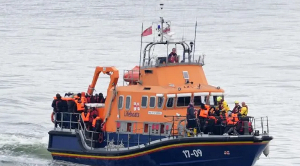Opinions of Saturday, 24 May 2014
Columnist: BabalWaiz, Husseini Yushau
Geo-Technologies: Military Operational Tools
Geo-Technologies: Military Operational Tools in the 21st Century
In the wake of the spread of terrorism in West African including the recent kidnappingsof 276 school girls and bombings in Nigeria by the militant group Boko Haram, it is more critical for countries in the region to have current geospatial data to effectively plan for and respond to such crises.
One such state-of the art solution combines various airborne and satellite borne technology that creates accurate terrain maps – even under the dense forest canopy.These rich in detail “under the trees” maps detail features that would not normally be visible with traditional map making technologies and would replace existing maps which, in most countries, were created decades ago using technology that was limited to mapping only the tops of the forestwithout depicting the terrain below.
In an interview with Africa News Analysis New York Correspondent, Colonel Tom Harrington, a retired US Air Force officer who is currently security advisor for NorthStar Geospatial ConsultingGroup said, “It is important to understand that modern technology, such as the ability to accurately map natural and man-made features beneath the trees, and enhance the geo-knowledge with the fusion of ancillary data, places vital geospatial information in the hands of the political, military, and civil leaders responsible for national security in a never-changing and growing threat environment.”
It is obvious that, if Nigerian government had embraced this mapping technique for long, it would not have been difficult now for the international security experts currently in the country to navigate the difficult and dense tropical rain forest terrain-which is the hide out of Boko Haram, with their kidnapped victims. One of the team for experts from the US actually lamented a couple of day ago that, upon their aerial overview surveillance, they discovered that the north-eastern area, called Chiboke, which shares border with Chad, is almost twice the size of Uganda, hence it would be difficult for them to penetrate without this cutting edge technology mapping information to guide their routes.
With growing economies and security challenges faced by West African leaders, it is apparent that state-of-the-art mapping technology would be an extremely important asset not only for infrastructure development and resource management but also for national security issues such as border delineation, military planning, search and rescue, and counter-insurgency military operations.
We only hope that this will serve as a lesson to our sub-regional leaders, so they will thereby adopt this mapping technology in order to secure its territorial borders from getting invaded by Boko Haram and other militant groups that are rearing their ugly heads in the region and are likely to spread their tentacles in other west African nations.
Husseini Yushau BabalWaiz, is the New York Correspondent African New Analysis & Research & Outreach Coordinator, Center for Media & Peace Initiatives, New York.












